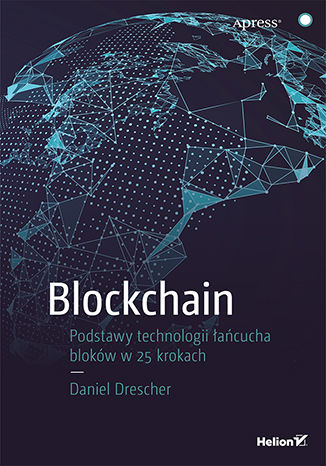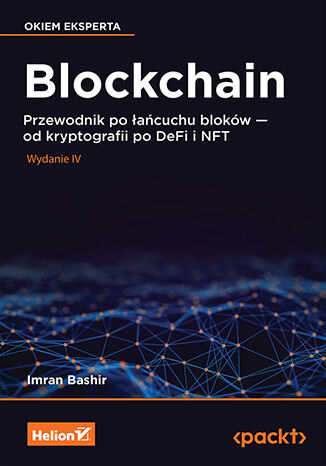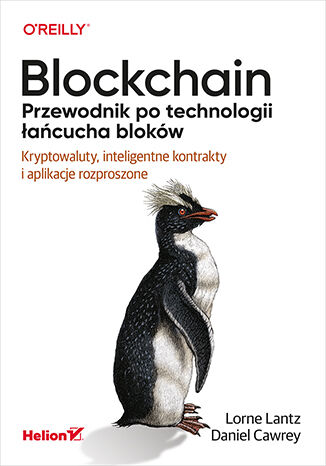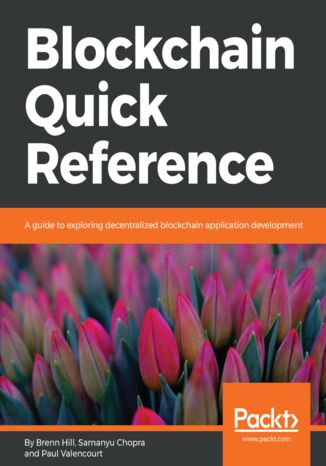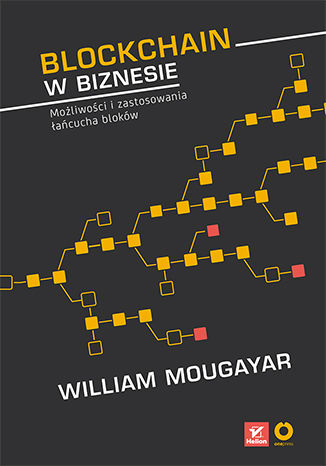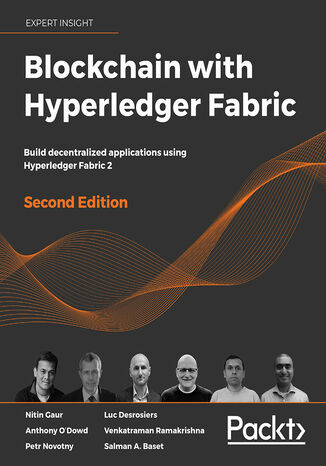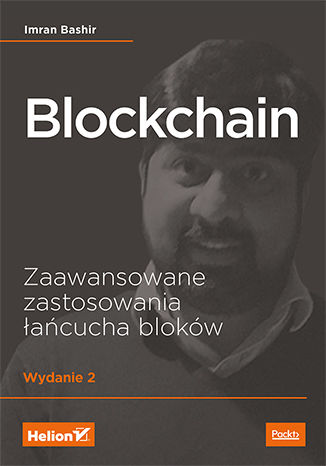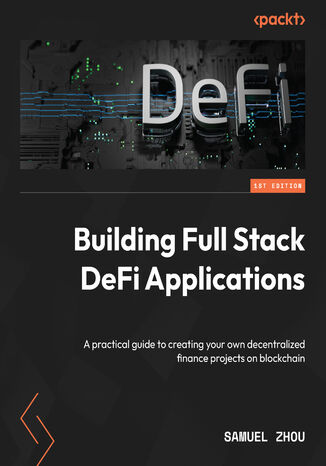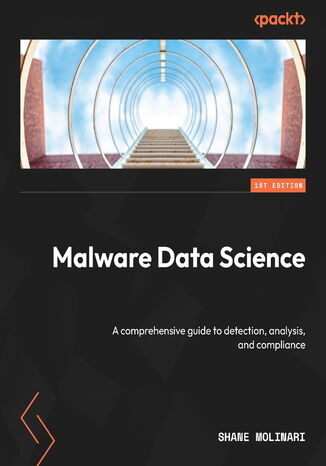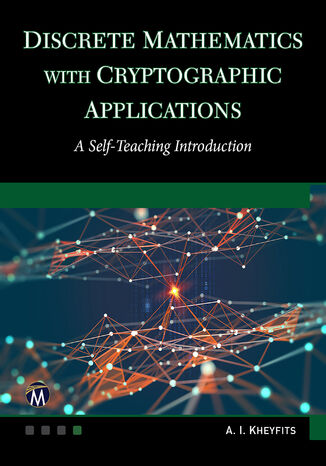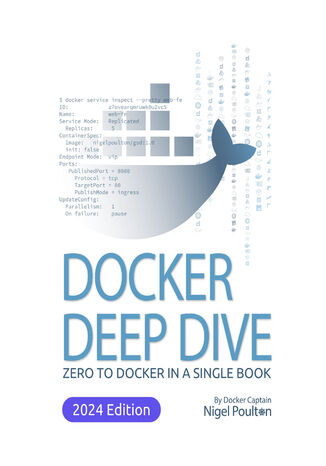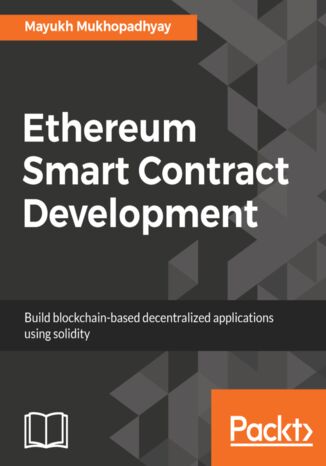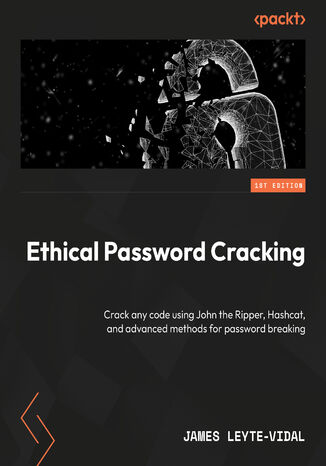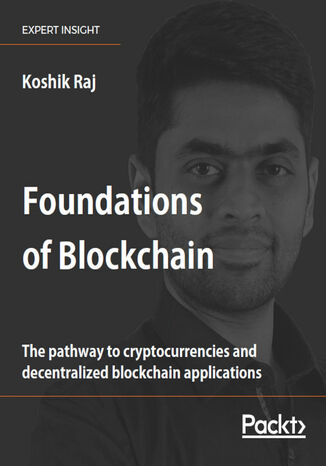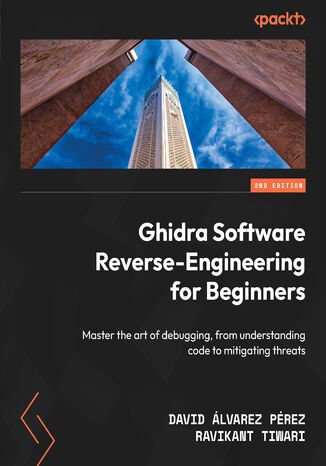Kategorien
E-Books
-
Wirtschaft
- Bitcoin
- Geschäftsfrau
- Coaching
- Controlling
- E-Business
- Ökonomie
- Finanzen
- Börse und Investitionen
- Persönliche Kompetenzen
- Computer im Büro
- Kommunikation und Verhandlungen
- Kleines Unternehmen
- Marketing
- Motivation
- Multimedia-Training
- Immobilien
- Überzeugung und NLP
- Steuern
- Sozialpolitik
- Handbȕcher
- Präsentationen
- Führung
- Public Relation
- Berichte, Analysen
- Geheimnis
- Social Media
- Verkauf
- Start-up
- Ihre Karriere
- Management
- Projektmanagement
- Personal (HR)
-
Für Kinder
-
Für Jugendliche
-
Bildung
-
Enzyklopädien, Wörterbücher
-
E-Presse
- Architektura i wnętrza
- Sicherheit und Gesundheit am Arbeitsplatz
- Biznes i Ekonomia
- Haus und Garten
- E-Business
- Ekonomia i finanse
- Esoterik
- Finanzen
- Persönliche Finanzen
- Unternehmen
- Fotografie
- Informatik
- HR und Gehaltsabrechnung
- Frauen
- Computer, Excel
- Buchhaltung
- Kultur und Literatur
- Wissenschaftlich und akademisch
- Umweltschutz
- meinungsbildend
- Bildung
- Steuern
- Reisen
- Psychologie
- Religion
- Landwirtschaft
- Buch- und Pressemarkt
- Transport und Spedition
- Gesundheit und Schönheit
-
Geschichte
-
Informatik
- Office-Programme
- Datenbank
- Bioinformatik
- IT Branche
- CAD/CAM
- Digital Lifestyle
- DTP
- Elektronik
- Digitale Fotografie
- Computergrafik
- Spiele
- Hacking
- Hardware
- IT w ekonomii
- Wissenschaftliche Pakete
- Schulbücher
- Computergrundlagen
- Programmierung
- Mobile-Programmierung
- Internet-Server
- Computernetzwerke
- Start-up
- Betriebssysteme
- Künstliche Inteligenz
- Technik für Kinder
- Webmaster
-
Andere
-
Fremdsprachen lernen
-
Kultur und Kunst
-
Lektüre
-
Literatur
- Anthologien
- Ballade
- Biografien und Autobiografien
- Für Erwachsene
- Drama
- Tagebücher, Memoiren, Briefe
- Epos
- Essay
- Science Fiction
- Felietonys
- Fiktion
- Humor, Satire
- Andere
- Klassisch
- Krimi
- Sachbücher
- Belletristik
- Mity i legendy
- Nobelpreisträger
- Kurzgeschichten
- Gesellschaftlich
- Okultyzm i magia
- Erzählung
- Erinnerungen
- Reisen
- Gedicht
- Poesie
- Politik
- Populärwissenschaftlich
- Roman
- Historischer Roman
- Prosa
- Abenteuer
- Journalismus
- Reportage
- Romans i literatura obyczajowa
- Sensation
- Thriller, Horror
- Interviews und Erinnerungen
-
Naturwissenschaften
-
Sozialwissenschaften
-
Schulbücher
-
Populärwissenschaft und akademisch
- Archäologie
- Bibliotekoznawstwo
- Filmwissenschaft
- Philologie
- Polnische Philologie
- Philosophie
- Finanse i bankowość
- Erdkunde
- Wirtschaft
- Handel. Weltwirtschaft
- Geschichte und Archäologie
- Kunst- und Architekturgeschichte
- Kulturwissenschaft
- Linguistik
- Literaturwissenschaft
- Logistik
- Mathematik
- Medizin
- Geisteswissenschaften
- Pädagogik
- Lehrmittel
- Populärwissenschaftlich
- Andere
- Psychologie
- Soziologie
- Theatrologie
- Teologie
- Theorien und Wirtschaftswissenschaften
- Transport i spedycja
- Sportunterricht
- Zarządzanie i marketing
-
Handbȕcher
-
Spielanleitungen
-
Professioneller und fachkundige Leitfaden
-
Jura
- Sicherheit und Gesundheit am Arbeitsplatz
- Geschichte
- Verkehrsregeln. Führerschein
- Rechtswissenschaften
- Gesundheitswesen
- Allgemeines. Wissenskompendium
- akademische Bücher
- Andere
- Bau- und Wohnungsrecht
- Zivilrecht
- Finanzrecht
- Wirtschaftsrecht
- Wirtschafts- und Handelsrecht
- Strafrecht
- Strafrecht. Kriminelle Taten. Kriminologie
- Internationales Recht
- Internationales und ausländisches Recht
- Gesundheitsschutzgesetz
- Bildungsrecht
- Steuerrecht
- Arbeits- und Sozialversicherungsrecht
- Öffentliches, Verfassungs- und Verwaltungsrecht
- Familien- und Vormundschaftsrecht
- Agrarrecht
- Sozialrecht, Arbeitsrecht
- EU-Recht
- Industrie
- Agrar- und Umweltschutz
- Wörterbücher und Enzyklopädien
- Öffentliche Auftragsvergabe
- Management
-
Führer und Reisen
- Afrika
- Alben
- Südamerika
- Mittel- und Nordamerika
- Australien, Neuseeland, Ozeanien
- Österreich
- Asien
- Balkan
- Naher Osten
- Bulgarien
- China
- Kroatien
- Tschechische Republik
- Dänemark
- Ägypten
- Estland
- Europa
- Frankreich
- Berge
- Griechenland
- Spanien
- Niederlande
- Island
- Litauen
- Lettland
- Mapy, Plany miast, Atlasy
- Miniführer
- Deutschland
- Norwegen
- Aktive Reisen
- Polen
- Portugal
- Andere
- Przewodniki po hotelach i restauracjach
- Russland
- Rumänien
- Slowakei
- Slowenien
- Schweiz
- Schweden
- Welt
- Türkei
- Ukraine
- Ungarn
- Großbritannien
- Italien
-
Psychologie
- Lebensphilosophien
- Kompetencje psychospołeczne
- zwischenmenschliche Kommunikation
- Mindfulness
- Allgemeines
- Überzeugung und NLP
- Akademische Psychologie
- Psychologie von Seele und Geist
- Arbeitspsychologie
- Relacje i związki
- Elternschafts- und Kinderpsychologie
- Problemlösung
- Intellektuelle Entwicklung
- Geheimnis
- Sexualität
- Verführung
- Aussehen ind Image
- Lebensphilosophien
-
Religion
-
Sport, Fitness, Diäten
-
Technik und Mechanik
Hörbücher
-
Wirtschaft
- Bitcoin
- Geschäftsfrau
- Coaching
- Controlling
- E-Business
- Ökonomie
- Finanzen
- Börse und Investitionen
- Persönliche Kompetenzen
- Kommunikation und Verhandlungen
- Kleines Unternehmen
- Marketing
- Motivation
- Immobilien
- Überzeugung und NLP
- Steuern
- Sozialpolitik
- Handbȕcher
- Präsentationen
- Führung
- Public Relation
- Geheimnis
- Social Media
- Verkauf
- Start-up
- Ihre Karriere
- Management
- Projektmanagement
- Personal (HR)
-
Für Kinder
-
Für Jugendliche
-
Bildung
-
Enzyklopädien, Wörterbücher
-
E-Presse
-
Geschichte
-
Informatik
-
Andere
-
Fremdsprachen lernen
-
Kultur und Kunst
-
Lektüre
-
Literatur
- Anthologien
- Ballade
- Biografien und Autobiografien
- Für Erwachsene
- Drama
- Tagebücher, Memoiren, Briefe
- Epos
- Essay
- Science Fiction
- Felietonys
- Fiktion
- Humor, Satire
- Andere
- Klassisch
- Krimi
- Sachbücher
- Belletristik
- Mity i legendy
- Nobelpreisträger
- Kurzgeschichten
- Gesellschaftlich
- Okultyzm i magia
- Erzählung
- Erinnerungen
- Reisen
- Poesie
- Politik
- Populärwissenschaftlich
- Roman
- Historischer Roman
- Prosa
- Abenteuer
- Journalismus
- Reportage
- Romans i literatura obyczajowa
- Sensation
- Thriller, Horror
- Interviews und Erinnerungen
-
Naturwissenschaften
-
Sozialwissenschaften
-
Populärwissenschaft und akademisch
- Archäologie
- Philosophie
- Wirtschaft
- Handel. Weltwirtschaft
- Geschichte und Archäologie
- Kunst- und Architekturgeschichte
- Kulturwissenschaft
- Literaturwissenschaft
- Mathematik
- Medizin
- Geisteswissenschaften
- Pädagogik
- Lehrmittel
- Populärwissenschaftlich
- Andere
- Psychologie
- Soziologie
- Teologie
- Zarządzanie i marketing
-
Handbȕcher
-
Professioneller und fachkundige Leitfaden
-
Jura
-
Führer und Reisen
-
Psychologie
- Lebensphilosophien
- zwischenmenschliche Kommunikation
- Mindfulness
- Allgemeines
- Überzeugung und NLP
- Akademische Psychologie
- Psychologie von Seele und Geist
- Arbeitspsychologie
- Relacje i związki
- Elternschafts- und Kinderpsychologie
- Problemlösung
- Intellektuelle Entwicklung
- Geheimnis
- Sexualität
- Verführung
- Aussehen ind Image
- Lebensphilosophien
-
Religion
-
Sport, Fitness, Diäten
-
Technik und Mechanik
Videokurse
-
Datenbank
-
Big Data
-
Biznes, ekonomia i marketing
-
Cybersicherheit
-
Data Science
-
DevOps
-
Für Kinder
-
Elektronik
-
Grafik / Video / CAX
-
Spiele
-
Microsoft Office
-
Entwicklungstools
-
Programmierung
-
Persönliche Entwicklung
-
Computernetzwerke
-
Betriebssysteme
-
Softwaretest
-
Mobile Geräte
-
UX/UI
-
Web development
-
Management
Podcasts
Kryptographie
Blockchain. Podstawy technologii łańcucha bloków w 25 krokach
Blockchain. Podstawy technologii łańcucha bloków w 25 krokach W pewnym uproszczeniu łańcuch bloków (blockchain) jest rozproszoną bazą danych, która utrzymuje stale rosnącą liczbę rekordów danych zabezpieczonych kryptograficznie przed manipulacją i próbą naruszenia integralności. Może posłużyć jako rozproszona księga rachunkowa. Technologia ta cieszy się dużym zainteresowaniem, a niektórzy entuzjaści nazywają ją nawet przełomową. Aby zrozumieć, do czego łańcuch bloków może się przydać, poprawnie ocenić uzasadnienie biznesowe startupów wykorzystujących łańcuch bloków czy też móc śledzić dyskusję na temat jego oczekiwanych efektów ekonomicznych, konieczne jest zrozumienie podstawowych pojęć związanych z technologią blockchain i uświadomienie sobie jej potencjalnych zastosowań. Niniejsza publikacja stanowi przystępne wprowadzenie do założeń technologii łańcucha bloków. Poszczególne pojęcia przedstawiono bez nadmiernej liczby szczegółów technicznych. Dzięki książce można przyswoić sobie takie koncepcje związane z łańcuchem bloków, jak transakcje, wartości haszujące, kryptografia, struktury danych, systemy peer-to-peer, systemy rozproszone, integralność systemu i konsensus w systemach rozproszonych. Książka została napisana w stylu konwersacyjnym, w sposób umożliwiający etapowe, stopniowe poznawanie problematyki. Matematyczne podstawy kryptografii i algorytmów zostały celowo pominięte, a zamiast tego zastosowano metafory i analogie. Dzięki temu zawarte tu treści będą zrozumiałe nawet dla Czytelnika bez przygotowania technicznego. W książce między innymi: główne koncepcje inżynierii programowania i potrzebna terminologia zastosowanie łańcucha bloków i zalety tej technologii wewnętrzne zasady działania łańcucha bloków ograniczenia łańcucha bloków i sposoby ich przezwyciężania omówienie kierunków prac rozwojowych nad technologią wykorzystywanie łańcucha bloków w warunkach rzeczywistych Łańcuch bloków. Czym jest? Do czego się przyda? W jaki sposób działa?
Blockchain. Przewodnik po łańcuchu bloków - od kryptografii po DeFi i NFT. Wydanie IV
Potencjał łańcucha bloków jest ogromny. W skrócie: blockchain to publiczny rejestr, który staje się ogólnoświatową, zdecentralizowaną księgą służącą do rejestrowania, inwentaryzacji i organizowania transferów wszelkiego rodzaju aktywów. Łańcuchy bloków są podstawą kryptowalut, znajdują też zastosowanie w wielu innych sektorach. Zrozumienie tej technologii jest warunkiem skorzystania ze wszystkich jej zalet. To kolejne, uzupełnione i zaktualizowane wydanie praktycznego podręcznika dla każdego, kto chce korzystać z tej technologii w praktyce. Opisuje techniczne podstawy łańcuchów bloków, kryptografii i protokołów osiągania konsensusu, przedstawia też bardziej zaawansowane zagadnienia, jak tworzenie zdecentralizowanych aplikacji (DApp) przy użyciu inteligentnych kontraktów czy też łączenie internetu rzeczy z łańcuchami bloków, korporacyjne łańcuchy bloków i tokenizacja. Dodatkowo w książce znalazły się nowe rozdziały na temat zdecentralizowanych finansów, zdecentralizowanej tożsamości, prywatności, skalowalności i bezpieczeństwa w łańcuchach bloków, a także rozważania na temat przyszłości tej fascynującej technologii. W trakcie lektury: poznasz mechanizmy działania bitcoina, Ethereum i innych łańcuchów bloków zrozumiesz zastosowania kryptografii w łańcuchach bloków poznasz algorytmy osiągania konsensusu i zasady tworzenia inteligentnych kontraktów nauczysz się zapewniać skalowalność, prywatność i bezpieczeństwo w łańcuchach bloków poznasz nowe trendy, w tym tożsamość zdecentralizowaną i suwerenną, DeFi, tokeny NFT i metaverse uzyskasz wgląd w przyszłość technologii łańcuchów bloków Już dziś zacznij wdrażać technologię, o której inni dowiedzą się jutro!
Blockchain, czyli łańcuch bloków, niefortunnie kojarzy się z kryptowalutami i przestępczością. Tymczasem potencjał tej technologii jest ogromny i zapewne wciąż nie znamy wszystkich możliwych jej zastosowań. Łańcuch bloków jest w istocie publicznym rejestrem, który może się stać ogólnoświatową, zdecentralizowaną księgą służącą do rejestrowania, inwentaryzacji i organizowania transferów wszelkiego rodzaju aktywów. Najwyższy więc czas, aby emocje i sensacyjno-kryminalne wyobrażenia dotyczące blockchaina zastąpić zrozumieniem tej technologii i aktualną wiedzą. Ta książka jest przeznaczona dla osób chcących zrozumieć działanie łańcucha bloków i rozważających praktyczne zastosowanie tej technologii. Skorzystają z niej i menedżerowie, i specjaliści IT. Omówiono tu ewolucję blockchaina i najróżniejsze sposoby jego użycia - przy czym to wyjaśnienie wychodzi daleko poza tematykę kryptowalut. Zaprezentowano też tematykę tworzenia inteligentnych kontraktów i zdecentralizowanych aplikacji z uwzględnieniem problemów wiążących się z tymi zastosowaniami łańcucha bloków. Nie zabrakło sprawdzonych informacji dotyczących naruszania prawa z wykorzystaniem łańcucha bloków, na przykład prania brudnych pieniędzy, hakowania giełd czy kradzieży. Dzięki temu przewodnikowi można łatwo zrozumieć, czym blockchain jest, a czym nie jest, do czego się nadaje i jakie modele biznesowe szczególnie mogą skorzystać na tej technologii. W książce między innymi: najważniejsze koncepcje dotyczące bitcoina i łańcucha bloków możliwości technologii blockchain skalowalność i rozwidlenia łańcucha bloków Ethereum i inne łańcuchy bloków możliwe sposoby zastosowania łańcucha bloków perspektywy technologii blockchain Łańcuch bloków: zostań mistrzem technologii jutra!
Blockchain Quick Reference. A guide to exploring decentralized blockchain application development
Brenn Hill, Samanyu Chopra, Paul Valencourt
Blockchain Quick Reference takes you through the electrifying world of blockchain technology and is designed for those who want to polish their existing knowledge regarding the various pillars of the blockchain ecosystem.This book is your go-to guide, teaching you how to apply principles and ideas for making your life and business better. You will cover the architecture, Initial Coin Offerings (ICOs), tokens, smart contracts, and terminologies of the blockchain technology, before studying how they work. All you need is a curious mind to get started with blockchain technology. Once you have grasped the basics, you will explore components of Ethereum, such as ether tokens, transactions, and smart contracts, in order to build simple Dapps. You will then move on to learning why Solidity is used specifically for Ethereum-based projects, followed by exploring different types of blockchain with easy-to-follow examples. All this will help you tackle challenges and problems. By the end of this book, you will not only have solved current and future problems relating to blockchain technology but will also be able to build efficient decentralized applications.
Blockchain w biznesie. Możliwości i zastosowania łańcucha bloków
William Mougayar, Vitalik Buterin
Internet całkowicie zmienił naszą cywilizację. Podobnym przełomem jest technologia blockchain (łańcuch bloków), która permanentnie rejestruje transakcje w taki sposób, że nie da się ich usunąć, lecz tylko można je sekwencyjnie aktualizować, tworząc w istocie niekończący się zapis historii. Ta pozornie prosta funkcjonalność ma ogromne implikacje, bo wymusza ewolucję sposobów zawierania transakcji, przechowywania danych i przenoszenia zasobów. Łańcuchy bloków są katalizatorami ogromnych zmian oddziałujących na sferę sprawowania władzy, zarządzanie własnością, styl życia, tradycyjne modele korporacyjne, społeczeństwo i instytucje globalne. Nie sposób dziś przewidzieć choćby części koncepcji i modeli biznesowych, które powstaną dzięki niej. Ta książka jest frapującym przewodnikiem, który jak żadna inna publikacja skłania do przemyśleń i oddania się pracy koncepcyjnej. Łańcuchy bloków pozwolą na bezkolizyjną wymianę wartości, jednak wymuszą nowe zdefiniowanie pojęć funkcji, relacji, władzy i zaufania. Dzięki tej książce zrozumiesz podstawy technologii blockchain, ale także dowiesz się, jak wiele nowych przestrzeni otworzy się do jej zastosowania. Przekonasz się, że już dziś należy postawić sobie kilka strategicznych pytań, aby za chwilę być gotowym na jeszcze ambitniejsze wyzwania, przekraczające dzisiejsze granice organizacyjne, regulacyjne i koncepcyjne. Z całą pewnością łańcuch bloków jest technologią bardziej skomplikowaną niż sieć WWW. Dzięki tej książce zrozumiesz jej znaczenie dla rozwoju cywilizacji. W tej książce między innymi: Wyjaśnienie koncepcji blockchain Łańcuch bloków jako nowa warstwa zaufania Możliwości łańcucha bloków i przeszkody w jego wdrażaniu Techniczne aspekty implementacji łańcucha bloków Decentralizacja sieci, przenikanie technologii i nowy kształt gospodarki Łańcuch bloków: otwórz się na całkowicie nowe koncepcje i modele biznesowe!
Nitin Gaur, Anthony O'Dowd, Petr Novotny, Luc Desrosiers, ...
Blockchain with Hyperledger Fabric - Second Edition is a refreshed and extended version of the successful book on practical Hyperledger Fabric blockchain development. This edition includes many new chapters, alongside comprehensive updates and additions to the existing ones. Entirely reworked for Hyperledger Fabric version 2, this edition will bring you right up to date with the latest in blockchain. Using a real-world Trade Finance and Logistics example, with working code available on GitHub, you’ll really understand both how and why Hyperledger Fabric can be used to maximum effect. This book is your comprehensive guide and reference to explore and build blockchain networks using Hyperledger Fabric version 2.This edition of the book begins by outlining the evolution of blockchain, including an overview of relevant blockchain technologies. Starting from first principles, you’ll learn how to design and operate a permissioned blockchain network based on Hyperledger Fabric version 2. You will learn how to configure the main architectural components of a permissioned blockchain network including Peers, Orderers, Certificate Authorities, Channels, and Policies. You’ll then learn how to design, develop, package, and deploy smart contracts, and how they are subsequently used by applications. This edition also contains chapters on DevOps, blockchain governance, and security, making this your go-to book for Hyperledger Fabric version 2.
Blockchain. Zaawansowane zastosowania łańcucha bloków. Wydanie II
Warto dobrze zrozumieć działanie łańcucha bloków. Ta nowatorska technologia intryguje badaczy, technologów i świat finansjery. Najlepiej jest znana z powiązań z bitcoinem i innymi kryptowalutami, jednak to rozwiązanie ma wielkie znaczenie również w finansach, administracji, multimediach i wielu innych branżach. Przejrzyste i kryptograficznie bezpieczne przechowywanie niemodyfikowalnego zapisu transakcji jest właściwością, która decyduje o wielkiej atrakcyjności łańcucha bloków. Bez wątpienia warto dobrze zaznajomić się z tą technologią i nauczyć się wykorzystywać ją w praktyce. Ta książka jest zaktualizowanym i uzupełnionym wydaniem świetnego przewodnika po świecie blockchaina; skorzysta z niej zarówno programista, jak i prezes konstruujący strategię swojej firmy. Znalazło się tu wyczerpujące omówienie technicznych podstaw łańcuchów bloków i systemów rozproszonych. Przedstawiono mechanizmy związane z kryptowalutami i pisaniem aplikacji wykonywanych w zdecentralizowanej maszynie wirtualnej w łańcuchu bloków Ethereum. Pokazano też inne rozwiązania z tego obszaru, w tym biznesowe platformy łańcuchów bloków rozwijanych w ramach projektu Hyperledger. Okazuje się, że technologia ta znakomicie uzupełnia internet rzeczy, a zwiększanie skalowalności łańcucha bloków daje nowe, fascynujące możliwości. W tej książce: podstawy przetwarzania rozproszonego, decentralizacja procesów i systemów wprowadzenie do kryptografii i sieci bitcoina techniczne zagadnienia związane z Ethereum i inteligentnymi kontraktami wprowadzenie do Web3 i do projektu Hyperledger informacje o zastosowaniu łańcucha bloków w różnych dziedzinach aktualne prognozy o przyszłości technologii łańcucha bloków Blockchain: w sieci węzłów rozproszonych nigdy nic nie zaginie!
Enter the world of Decentralized Finance (DeFi) with Building Full Stack DeFi Applications. Understand how this blockchain-based financial technology, designed to manage crypto assets, runs independently without centralized financial institutions like banks and brokerages, eliminating the fees that banks and other financial companies charge for using their services. This book will show you how DeFi solutions are built with smart contracts running on blockchains and how they allow users to gain and earn crypto assets based on the trust of the smart contracts.This book uncovers the inner workings of DeFi by guiding you through the mathematical foundations and teaching you how to build real-world DeFi products with Solidity and JavaScript. As you progress through the chapters, you’ll learn how to implement smart contracts of liquidity pools to trade cryptocurrencies and implement staking, including farming features that allow users to earn. You’ll also find out how to create asset pools that allow users to lend and borrow cryptocurrencies and generate interest. Additionally, you’ll discover how to use Web3 libraries to build the frontend of DeFi products.By the end of this book, you’ll will be well acquainted with popular tools, libraries, and design patterns for implementing a full-stack DeFi application with Web3 and Solidity.
In today's world full of online threats, the complexity of harmful software presents a significant challenge for detection and analysis. This insightful guide will teach you how to apply the principles of data science to online security, acting as both an educational resource and a practical manual for everyday use.Data Science for Malware Analysis starts by explaining the nuances of malware, from its lifecycle to its technological aspects before introducing you to the capabilities of data science in malware detection by leveraging machine learning, statistical analytics, and social network analysis. As you progress through the chapters, you’ll explore the analytical methods of reverse engineering, machine language, dynamic scrutiny, and behavioral assessments of malicious software. You’ll also develop an understanding of the evolving cybersecurity compliance landscape with regulations such as GDPR and CCPA, and gain insights into the global efforts in curbing cyber threats.By the end of this book, you’ll have a firm grasp on the modern malware lifecycle and how you can employ data science within cybersecurity to ward off new and evolving threats.
Mercury Learning and Information, Alexander I. Kheyfits
This book offers a comprehensive guide to discrete mathematics and its applications to cryptography. It is designed for students and professionals in fields such as discrete mathematics and finite mathematics, with all necessary prerequisites clearly explained and illustrated. The text introduces key concepts in number theory, coding theory, and information theory, which are essential for understanding cryptography.Understanding discrete mathematics is crucial for anyone working in cryptography and related fields. The book begins with a survey of elementary functions and moves on to propositional algebra, set theory, and algebraic structures like groups, rings, and fields. It covers binary relations, combinatorics, and elements of number theory, which are fundamental to cryptographic methods.Readers will explore topics such as Boolean functions, hashing functions, cryptographic maps, combinatorial circuits, and graph theory. The book also delves into advanced areas like finite automata, game theory, and Turing machines. Through numerous examples, problems, and solutions, readers will gain a solid foundation in discrete mathematics and its cryptographic applications.
Docker Deep Dive. Zero to Docker in a single book - Third Edition
Embark on a transformative journey into the world of Docker and containers with this expertly crafted course. Starting with a high-level overview, you'll gain a solid understanding of containers and the significance of Docker in modern software development. Delve into Docker's core components, exploring essential standards, projects, and the intricacies of the Docker Engine, ensuring a robust foundation.As you progress, practical hands-on modules will guide you through working with images and containers, containerizing applications, and managing multi-container setups using Docker Compose. You'll learn to deploy applications efficiently with Docker Swarm and Docker Stacks, enhancing your ability to manage and scale containerized applications. The course also introduces Docker's integration with WebAssembly, offering a glimpse into cutting-edge container technologies.Concluding with advanced topics, you'll master Docker networking, including overlay networks and persistent data management with volumes. Emphasis on Docker security ensures you can safeguard your applications and data effectively. By the end of this course, you'll possess the skills and knowledge to leverage Docker's full capabilities, from development to deployment, ensuring you remain at the forefront of container technology.
Ethereum and Blockchain will change the way software is built for business transactions. Most industries have been looking to leverage these new technologies to gain efficiencies and create new business models and opportunities.The Ethereum Cookbook covers various solutions such as setting up Ethereum, writing smart contracts, and creating tokens, among others. You’ll learn about the security vulnerabilities, along with other protocols of Ethereum.Once you have understood the basics, you’ll move on to exploring various design decisions and tips to make your application scalable and secure. In addition to this, you’ll work with various Ethereum packages such as Truffle, Web3, and Ganache.By the end of this book, you’ll have comprehensively grasped the Ethereum principles and ecosystem.
Ethereum is a public, blockchain-based distributed computing platform featuring smart contract functionality. This book is your one-stop guide to blockchain and Ethereum smart contract development. We start by introducing you to the basics of blockchain. You'll learn about hash functions, Merkle trees, forking, mining, and much more. Then you'll learn about Ethereum and smart contracts, and we'll cover Ethereum virtual machine (EVM) in detail. Next, you'll get acquainted with DApps and DAOs and see how they work. We'll also delve into the mechanisms of advanced smart contracts, taking a practical approach.You'll also learn how to develop your own cryptocurrency from scratch in order to understand the business behind ICO. Further on, you'll get to know the key concepts of the Solidity programming language, enabling you to build decentralized blockchain-based applications. We'll also look at enterprise use cases, where you'll build a decentralized microblogging site. At the end of this book, we discuss blockchain-as-a-service, the dark web marketplace, and various advanced topics so you can get well versed with the blockchain principles and ecosystem.
Whether you’re looking to crack passwords as part of a thorough security audit or aiming to recover vital information, this book will equip you with the skills to accomplish your goals. Written by a cybersecurity expert with over fifteen years of experience in penetration testing, Ethical Password Cracking offers a thorough understanding of password protection and the correct approach to retrieving password-protected data.As you progress through the chapters, you first familiarize yourself with how credentials are stored, delving briefly into the math behind password cracking. Then, the book will take you through various tools and techniques to help you recover desired passwords before focusing on common cracking use cases, hash recovery, and cracking. Real-life examples will prompt you to explore brute-force versus dictionary-based approaches and teach you how to apply them to various types of credential storage.By the end of this book, you'll understand how passwords are protected and how to crack the most common credential types with ease.
Foundations of Blockchain. The pathway to cryptocurrencies and decentralized blockchain applications
Blockchain technology is a combination of three popular concepts: cryptography, peer-to-peer networking, and game theory. This book is for anyone who wants to dive into blockchain from first principles and learn how decentralized applications and cryptocurrencies really work.This book begins with an overview of blockchain technology, including key definitions, its purposes and characteristics, so you can assess the full potential of blockchain. All essential aspects of cryptography are then presented, as the backbone of blockchain. For readers who want to study the underlying algorithms of blockchain, you’ll see Python implementations throughout.You’ll then learn how blockchain architecture can create decentralized applications. You’ll see how blockchain achieves decentralization through peer-to-peer networking, and how a simple blockchain can be built in a P2P network. You’ll learn how these elements can implement a cryptocurrency such as Bitcoin, and the wider applications of blockchain work through smart contracts. Blockchain optimization techniques, and blockchain security strategies are then presented. To complete this foundation, we consider blockchain applications in the financial and non-financial sectors, and also analyze the future of blockchain. A study of blockchain use cases includes supply chains, payment systems, crowdfunding, and DAOs, which rounds out your foundation in blockchain technology.
David Álvarez Pérez, Ravikant Tiwari
Written by David Álvarez Pérez, a senior malware analyst at Gen Digital Inc., and Ravikant Tiwari, a senior security researcher at Microsoft, with expertise in malware and threat detection, this book is a complete guide to using Ghidra for examining malware, making patches, and customizing its features for your cybersecurity needs.This updated edition walks you through implementing Ghidra’s capabilities and automating reverse-engineering tasks with its plugins. You’ll learn how to set up an environment for practical malware analysis, use Ghidra in headless mode, and leverage Ghidra scripting to automate vulnerability detection in executable binaries. Advanced topics such as creating Ghidra plugins, adding new binary formats, analyzing processor modules, and contributing to the Ghidra project are thoroughly covered too.This edition also simplifies complex concepts such as remote and kernel debugging and binary diffing, and their practical uses, especially in malware analysis. From unpacking malware to analyzing modern ransomware, you’ll acquire the skills necessary for handling real-world cybersecurity challenges.By the end of this Ghidra book, you’ll be adept at avoiding potential vulnerabilities in code, extending Ghidra for advanced reverse-engineering, and applying your skills to strengthen your cybersecurity strategies.

